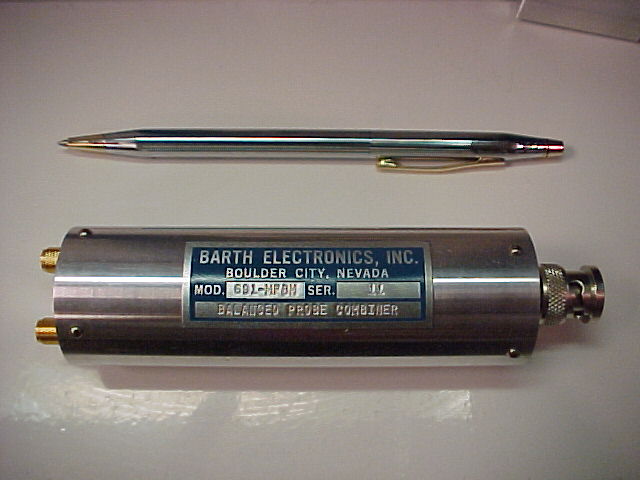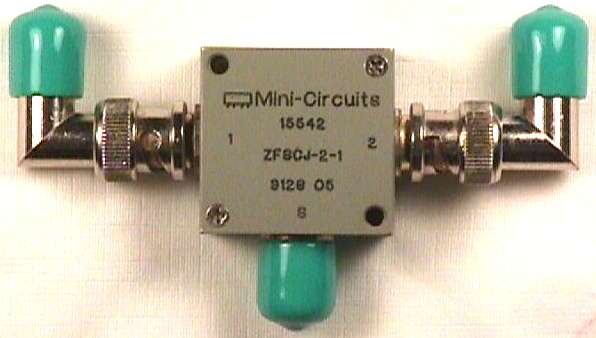

Address: P. O. Box 1457, Los Gatos,
CA 95031
TEL:
800-323-3956/408-356-4186
FAX:
408-358-3799
Mobile: 408-858-4528
URL:
www.dsmith.org
Email: doug@dsmith.org

The picture above shows a high performance 180 degree combiner. It provides
an output (BNC connector on the right) that is proportional to the difference
between the two inputs (SMA connectors on the left). Such a device is very
useful in signal integrity and EMC investigations as part of a Balanced
Coaxial Probe.
A Balanced Coaxial Probe is the much more tolerant of lead inductance
than probes with a capacitive input impedance, including FET types. At
the high frequencies used in today's circuits, its input impedance is often
higher than many active FET probes. The structure is described in the article
Balanced Probe Extends High-Frequency Measurements in the 1994 IEEE
Circuits & Devices Magazine. The article is available on this website
(about 3.5 Mbytes). To see the article, click
here. You will need Acrobat Reader V4 to view the file. To get the
reader free from Adobe, click here.
The particular combiner shown above is made by Barth Electronics and has a 40 dB common mode rejection ratio (CMRR) from 100 kHz to 1 GHz. A Balanced Coaxial Probe made with this combiner has the potential to exceed the CMRR performance of other available balanced probes. This characteristic makes it ideal for measuring signals in the presence of severe interference, such as results from ESD events. Another 180 degree combiner is available from Mini-Circuits that has about a 30 dB CMRR from 1 to 500 MHz, and is adequate for many purposes. The model number of the Mini-Circuits combiner is ZFSCJ-2-1. Click here for the spec sheet from Mini-Circuits. The combiner is shown in the figure below.

Note the added right angle BNC fittings. They make it easier to connect the coaxial cables of the probe to the combiner. Be sure to specify the type of connectors you want on the combiner (such as BNC or SMA) and the impedance (usually 50 Ohms).